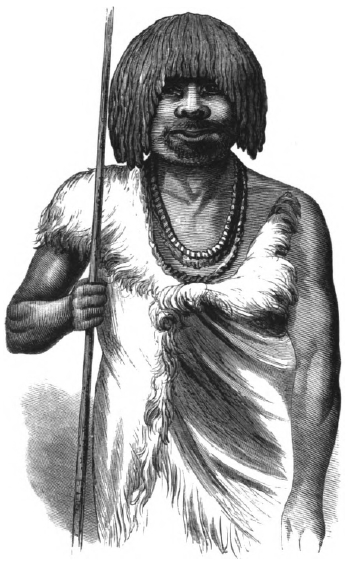
Aboriginal Tasmanians
The Aboriginal Tasmanians (Palawa kani: Palawa or Pakana[4]) are[5] the Aboriginal people of the Australian island of Tasmania, located south of the mainland. At the time of European contact Tasmanian Aboriginals were divided into a number of distinct ethnic groups. For much of the 20th century, the Tasmanian Aboriginal people were widely, and erroneously, thought of as extinct and intentionally exterminated by white settlers.[6] Contemporary figures (2016) for the number of people of Tasmanian Aboriginal descent vary according to the criteria used to determine this identity, ranging from 6,000 to over 23,000.[1][2]
First arriving in Tasmania (then a peninsula of Australia) around 40,000 years ago, the ancestors of the Aboriginal Tasmanians were cut off from the Australian mainland by rising sea levels c. 6000 BC. They were entirely isolated from the outside world for 8,000 years until European contact.
Before British colonisation of Tasmania in 1803, there were an estimated 3,000–15,000 Aboriginal Tasmanians.[a] The Aboriginal Tasmanian population suffered a drastic drop in numbers within three decades, so that by 1835 only some 400 full-blooded Tasmanian Aboriginal people survived, most of this remnant being incarcerated in camps where all but 47 died within the following 12 years.[7] No consensus exists as to the cause, over which a major controversy arose.[b] The traditional view, still affirmed, held that this dramatic demographic collapse was the result of the impact of introduced diseases, rather than the consequence of policy.[8][9][10][11][c] Geoffrey Blainey, for example, wrote that by 1830 in Tasmania: "Disease had killed most of them but warfare and private violence had also been devastating."[12][13] Henry Reynolds attributed the depletion to losses in the Black War.[14] Keith Windschuttle claimed that in addition to disease, the prostitution of women in a society already in decline, explained the extinction.[15] Many historians of colonialism and genocide, such as Ben Kiernan, Colin Tatz, and Benjamin Madley, consider that the Tasmanian decimation qualifies as genocide by the definition of Raphael Lemkin adopted in the UN Genocide Convention.[16][17][18][d]
By 1833, George Augustus Robinson, sponsored by Lieutenant-Governor George Arthur, had persuaded the approximately 200 surviving Aboriginal Tasmanians to surrender themselves with assurances that they would be protected and provided for, and eventually have their lands returned. These assurances were no more than a ruse by Robinson or Lieutenant-Governor Arthur to transport the Tasmanians quietly to a permanent exile in the Furneaux Islands.[19] The survivors were moved to Wybalenna Aboriginal Establishment on Flinders Island, where disease continued to reduce their numbers. In 1847, the last 47 survivors on Wybalenna were transferred to Oyster Cove, south of Hobart. Two individuals, Truganini (1812–1876) and Fanny Cochrane Smith (1834–1905), are separately considered to have been the last people solely of Tasmanian descent.[e][f]
The complete Aboriginal Tasmanian languages have been lost; research suggests that the languages spoken on the island belonged to several distinct language families. Some original Tasmanian language words remained in use with Palawa people in the Furneaux Islands, and there are some efforts to reconstruct a language from the available wordlists. Today, some thousands of people living in Tasmania describe themselves as Aboriginal Tasmanians, since a number of Palawa women bore children to European men in the Furneaux Islands and mainland Tasmania.[1]
In June 2005, the Tasmanian Legislative Council introduced a reformed definition of Aboriginality into the Aboriginal Lands Act.[160]
The bill was passed to allow Aboriginal Lands Council elections to commence, resolving the uncertainty over who was "Aboriginal", and thus eligible to vote.
Under the bill, a person can claim "Tasmanian Aboriginality" if they meet all of the following criteria:
![]() Media related to Tasmanian Aboriginals at Wikimedia Commons
Media related to Tasmanian Aboriginals at Wikimedia Commons